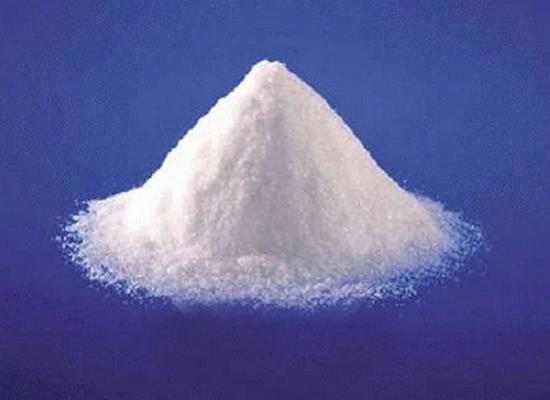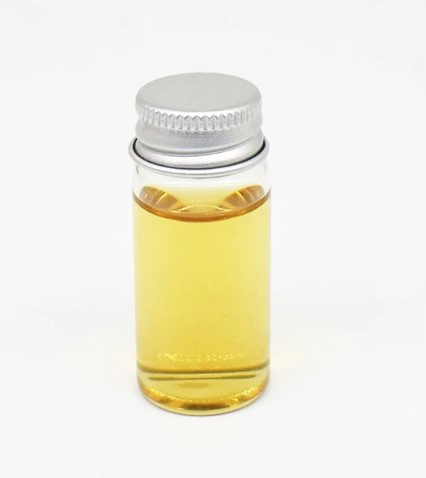NADP, Disodium Salt: physiological role, activities and applications
Nov 6,2023
General Description
NADP, Disodium Salt is a coenzyme derived from vitamin B3 that plays a crucial role in cellular energy metabolism, redox reactions, signaling pathways, and gene expression regulation. It acts as an electron carrier in cellular respiration and is involved in the production of ATP. NADP, Disodium Salt also serves as a cofactor for enzymes involved in key metabolic pathways. It is important in maintaining genomic stability, DNA repair, and cellular metabolism regulation. Additionally, NADP, Disodium Salt has been studied for its potential therapeutic applications in age-related diseases, neurodegenerative disorders, metabolic disorders, and cancer therapy. Overall, NADP, Disodium Salt is essential for proper cellular function and holds promising clinical prospects.

Figure 1. NADP, Disodium Salt
Physiological role
NADP, Disodium Salt is a coenzyme that plays a crucial role in various biological processes. It is derived from vitamin B3, also known as niacin or nicotinamide, and is involved in cellular energy metabolism and redox reactions. One of the primary physiological functions of NADP, Disodium Salt is its role in cellular respiration and energy production. It participates in the process of oxidative phosphorylation, which occurs in the mitochondria, where it acts as an electron carrier. NADP, Disodium Salt is reduced to NADH by accepting electrons from metabolic reactions, such as the breakdown of glucose. NADH then donates these electrons to the electron transport chain, leading to the production of adenosine triphosphate (ATP), the universal energy currency of cells. NADP, Disodium Salt also serves as a coenzyme for several enzymes involved in key metabolic pathways. For example, it is a required component for enzymes involved in glycolysis, the citric acid cycle, and fatty acid oxidation. These enzymes use NADP, Disodium Salt as a cofactor to facilitate the transfer of electrons and promote the conversion of substrates into intermediates necessary for energy production. Additionally, NADP, Disodium Salt plays a critical role in cellular redox reactions. It exists in two forms: oxidized (NAD+) and reduced (NADH). This interconversion between NAD+ and NADH allows for the transfer of electrons between different molecules, making NADP, Disodium Salt a vital participant in redox reactions throughout the cell. These reactions include processes such as DNA repair, maintenance of genomic stability, and regulation of cellular metabolism. Furthermore, NADP, Disodium Salt is involved in signaling pathways and gene expression regulation. Some enzymes, known as sirtuins, require NADP, Disodium Salt as a cofactor to carry out their deacetylation reactions, which are crucial for cellular processes like aging, DNA repair, and stress response. In conclusion, β-Nicotinamide adenine dinucleotide (NADP, Disodium Salt) plays a central role in cellular energy metabolism, redox reactions, signaling pathways, and gene expression regulation. Its involvement in these essential biological processes underscores its significance in maintaining proper cellular function and overall organismal health. 1
Activities
A study compared NADP, Disodium Salt and adenosine 5'-triphosphate (ATP) as potential inhibitory neurotransmitters in human and monkey colons. The researchers used various assays and measurements to evaluate the release of NADP, Disodium Salt, ATP, and their metabolites, as well as their effects on postjunctional responses and smooth muscle cells (SMCs). The findings indicate that NADP, Disodium Salt, unlike ATP, exhibited frequency-dependent release correlated with electrical field stimulation. Neurotoxins inhibited the overflow of NADP, Disodium Salt, suggesting its neuronal origin. Inhibitory junction potentials and responses to exogenous NADP, Disodium Salt, but not ATP, were blocked by specific P2Y receptor antagonists. Furthermore, NADP, Disodium Salt activated nonselective cation currents in SMCs, indicating its ability to modulate cellular activity. However, NADP, Disodium Salt failed to induce outward currents in SMCs, suggesting that SMCs may not be direct targets for inhibitory purine neurotransmitters. Overall, the study concludes that NADP, Disodium Salt better meets the criteria for a neurotransmitter than ATP in human and monkey colons. These findings suggest that NADP, Disodium Salt may play a role in the neural regulation of colonic motility. 2
Applications
NADP, Disodium Salt is a coenzyme involved in various cellular processes and has emerged as a key molecule in clinical applications. As an essential component of cellular metabolism, NADP, Disodium Salt plays a crucial role in energy production and redox reactions within cells. In recent years, NADP, Disodium Salt has gained attention for its potential therapeutic applications. Studies have shown that increasing NADP, Disodium Salt levels can enhance mitochondrial function, improve cellular health, and promote longevity. This has led to investigations into the use of NADP, Disodium Salt supplementation in treating age-related diseases, neurodegenerative disorders, and metabolic disorders. Furthermore, NADP, Disodium Salt is also being explored for its potential role in cancer therapy. By targeting specific enzymes involved in NAD+ metabolism, researchers aim to manipulate cellular energy production and induce selective cell death in cancer cells. Overall, NADP, Disodium Salt holds promising clinical prospects, with ongoing research aimed at understanding its mechanisms of action and exploring its therapeutic potential in various disease contexts. 3
Reference
1. Barra L, Awakawa T, Shirai K, Hu Z, Bashiri G, Abe I. β-NAD as a building block in natural product biosynthesis. Nature. 2021 Dec;600(7890):754-758.
2. Hwang SJ, Durnin L, Dwyer L, Rhee PL, Ward SM, Koh SD, Sanders KM, Mutafova-Yambolieva VN. β-nicotinamide adenine dinucleotide is an enteric inhibitory neurotransmitter in human and nonhuman primate colons. Gastroenterology. 2011 Feb;140(2):608-617.
3. Deshpande DA, Guedes AGP, Lund FE, Subramanian S, Walseth TF, Kannan MS. CD38 in the pathogenesis of allergic airway disease: Potential therapeutic targets. Pharmacol Ther. 2017 Apr;172:116-126.
- Related articles
- Related Qustion
- NADP, Disodium Salt: NADP vs NADPH Apr 16, 2024
NADP, Disodium Salt is the sodium salt form of NADP. NADP, Disodium Salt is a white to pale yellow amorphous powder.
- NADP, Disodium Salt: Overview, Biotransformation and Clinical Applications Mar 5, 2024
NADP disodium salt is a vital coenzyme facilitating energy production and redox reactions, which makes it valuable in biomedical research and clinical practice.
- Application of NADP Disodium Salt Dec 7, 2021
NADP disodium salt (Disodium NADP), a nicotinamide adenine dinucleotide, is a redox cofactor. NADP disodium salt is a key cofactor for electron transfer in the metabolism, being alternately oxidized (NADP+) and reduced (NADPH).
Tetrabutyl titanate is commonly used as a catalyst. It is able to improve the adhesion of coatings, rubber, and plastics to metal surfaces.....
Nov 6,2023Organic reagentsStanolone, synthesized via SRD5A, has diverse clinical applications in hormone-related disorders and cancer treatment.....
Nov 6,2023APINADP, Disodium Salt
24292-60-2You may like
NADP, Disodium Salt manufacturers
- NADP disodium salt
-

- $54.00 / 100mg
- 2025-12-18
- CAS:24292-60-2
- Min. Order:
- Purity: 98.61%
- Supply Ability: 10g
- β-NADP
-

- $0.00 / 1kg
- 2025-12-18
- CAS:24292-60-2
- Min. Order: 1kg
- Purity: 99%
- Supply Ability: 20MT
- NADP, Disodium Salt
-

- $0.00 / 1kg
- 2025-12-02
- CAS:24292-60-2
- Min. Order: 0.10000000149011612kg
- Purity: ≥98%
- Supply Ability: 20tons






